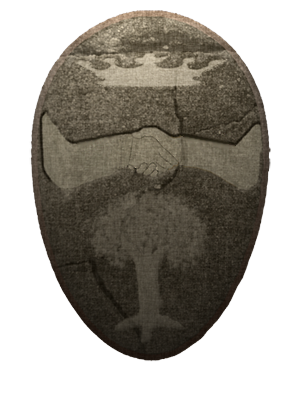









Sandor BernathSandor Bernath (Hungarian-American 1892-1984)
Sandor Bernath was known for his stylized watercolors of sailing ships. He was a student of Edward Hopper. Born in Hungary on December 30, 1892, Bernath immigrated in his youth to the United States, and by the early 1920s had begun to establish himself within New York art circles. In January of 1922, he was given a one-man show at Mrs. Malcolm's Gallery on East 64th Street. Although little is known about Bernath's education and early training, this exhibition of nineteen watercolors included works, which suggest that by 1922, the artist had traveled and studied abroad. "Coast of Normandy" and "Shrine, Czechoslovakia" are two works the subjects of which certainly resulted from time spent in Europe. Other paintings exhibited in the 1922 show, such as "Brooklyn Bridge", "Weehawken Freight Yards" and "East River" reveal that on the whole, Bernath's earliest subjects remained those found in New York. After his show at Mrs. Malcolm's Gallery, Bernath became a member of the American Watercolor Society and later that year, showed six works at their annual exhibition. Unlike the works exhibited on East 63rd Street, the watercolors featured at the AWS show, such as "Grand Manan Coast" and "Fishing Boats", reflected a growing attraction to the subjects offered within the Maine landscape, an attraction which truly took hold in the summer of 1922. Like many of his peers, Bernath worked as a teacher and illustrator to support himself. In order to escape the tedium of these dreaded day-jobs, many retreated to the villages of Maine and Massachusetts where artists' communities such as those at Monhegan Island, Gloucester and Ogunquit had sprung from the modern artist's desire to study natural forms. By 1923, Bernath's fascination with these forms becomes apparent with the complete shift in focus of his subject matter from the sights and scenes of his urban surroundings to the land and seascapes of New England. In 1923, having joined the Brooklyn Society of Modern Artists and exhibited at their annual spring show with contemporaries such as Stuart Davis, Bernath was chosen to participate in a winter exhibition at the Brooklyn Museum entitled Water Color Paintings, Pastels, Drawings and Sculpture by American and European Artists. This exhibition featured six of his watercolors representing various pastoral subjects; each executed during the artist's respites from New York City. One of these works, "Surf" (1922), was purchased for the museum's collection, and subsequently featured in their 1924 show, Loan Exhibition of Brooklyn Art Treasures and Original Drawings by American Artists. In 1925, he served on the Jury of Selection as well as on the Hanging Committee of the American Watercolor Society's annual exhibition but 1926, was his last year of participation. After a final exhibition with the Brooklyn Museum in 1927, it appears that Bernath took up residence in Eastport, Maine, where he continued to cultivate his relationship with the natural world. However, one work has been found listing W. Tunkhannock, Penna. as an address and watercolors exist of a Pueblo scene, leading to the conclusion that Bernath, like so many of his contemporaries, was drawn to explore the possibilities of the Southwest including Taos, New Mexico. ("Taos at Night" and "Footprints").
Works
|